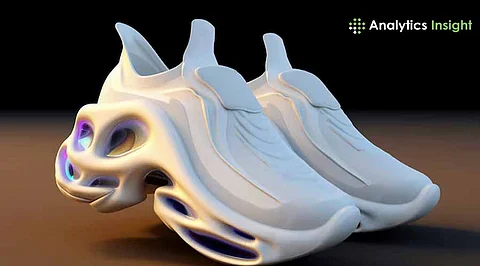

The 4-minute mile has remained unconquered by women for decades—until now. Nike's AI algorithms create custom shoes tailored to individual biomechanics, potentially rewriting history when Faith Kipyegon attempts this feat at Stade Charléty in 2025
Nike aims to rewrite history with AI-powered athletic innovation. Faith Kipyegon's partnership with Nike showcases the brand's revolutionary approach to athletic performance. The partnership aims to break a historic barrier, the 4-minute mile for women, previously thought impossible.
Nike's integration of AI and 3D printing technology transforms traditional manufacturing. This comprehensive innovation encompasses body mapping, sport science, and unprecedented customization. The result could reshape athletic gear development forever.
The sub-4-minute mile represents one of athletics' most coveted barriers. Faith Kipyegon currently holds the women's world record at 4:07.64. Breaking this record requires shaving 7.65 seconds, a monumental challenge in human performance.
Only Roger Bannister has achieved this feat for men in 1954. The physiological demands make the barrier particularly challenging for women. Nevertheless, recent studies suggest optimal conditions could enable this historic breakthrough.
Nike employs Solid Deposition Modeling (SDM) technology for revolutionary footwear creation. The process uses flexible TPU filaments to craft customized shoes tailored to individual biomechanics. Each component receives location-specific adjustments in rigidity and flexibility.
Advanced algorithms analyze data to generate performance-optimized prototypes. Variable midsole density provides targeted cushioning and support. This precision manufacturing creates lightweight, breathable footwear matching athlete-specific requirements. The technology dramatically enhances both performance and comfort.
Nike's Sport Research Lab utilizes comprehensive data collection methods. Body mapping, VO2 max testing, and detailed foot scanning inform design decisions. These scientific approaches ensure maximum performance enhancement.
Engineers in Beaverton process collected data through advanced algorithms. The process includes physiological assessment, biomechanical analysis, and mental performance optimization. This holistic approach addresses every aspect affecting athletic performance.
The collaboration extends beyond engineering to include design elements. Color palette and visual aspects receive equal attention. This comprehensive approach balances technical performance with athlete preferences.
Traditional Nike manufacturing relied on manual processes including cutting, sewing, and molding. These methods required extensive time and lacked individual customization. Limited adaptability constrained performance optimization.
AI-driven 3D printing revolutionizes production timelines and capabilities. Nike Flyprint technology reduces prototyping time by 16 times compared to previous methods. Digital design enables rapid iterations and precise personalization. This transformation enhances manufacturing efficiency significantly.
Major athletic brands embrace similar technological advances. Adidas partners with Carbon for Futurecraft 4D production using Digital Light Synthesis. Swiss brand On introduced Cloudboom Strike LS in 2024 with sprayed-on additive manufacturing.
These innovations demonstrate industry-wide transformation toward personalized performance gear. Nike's comprehensive approach positions them at the technological forefront. The competition drives continuous advancement in athletic footwear development. This technological race benefits athletes across all disciplines.
Faith Kipyegon prepares for her historic attempt at Stade Charléty on 26 June 2025. The venue holds significance as her previous record-breaking location. Training continues at Global Sports Communication Camp in Kenya.
A dedicated team coordinates efforts across continents. Nike engineers continuously refine designs based on training data. This unprecedented preparation aims to optimize every performance variable. The collaborative effort demonstrates modern sport science integration.
Nike's AI integration represents a paradigm shift in athletic gear development. The technology promises unprecedented customization for optimal performance enhancement across all sports.
This innovation potentially democratizes elite athlete technology. Future Nike products could incorporate similar AI-driven customization for broader consumer markets, transforming retail athletics.
The successful sub-4-minute mile attempt would validate AI's transformative potential in sports science. It establishes new benchmarks for performance gear development.
